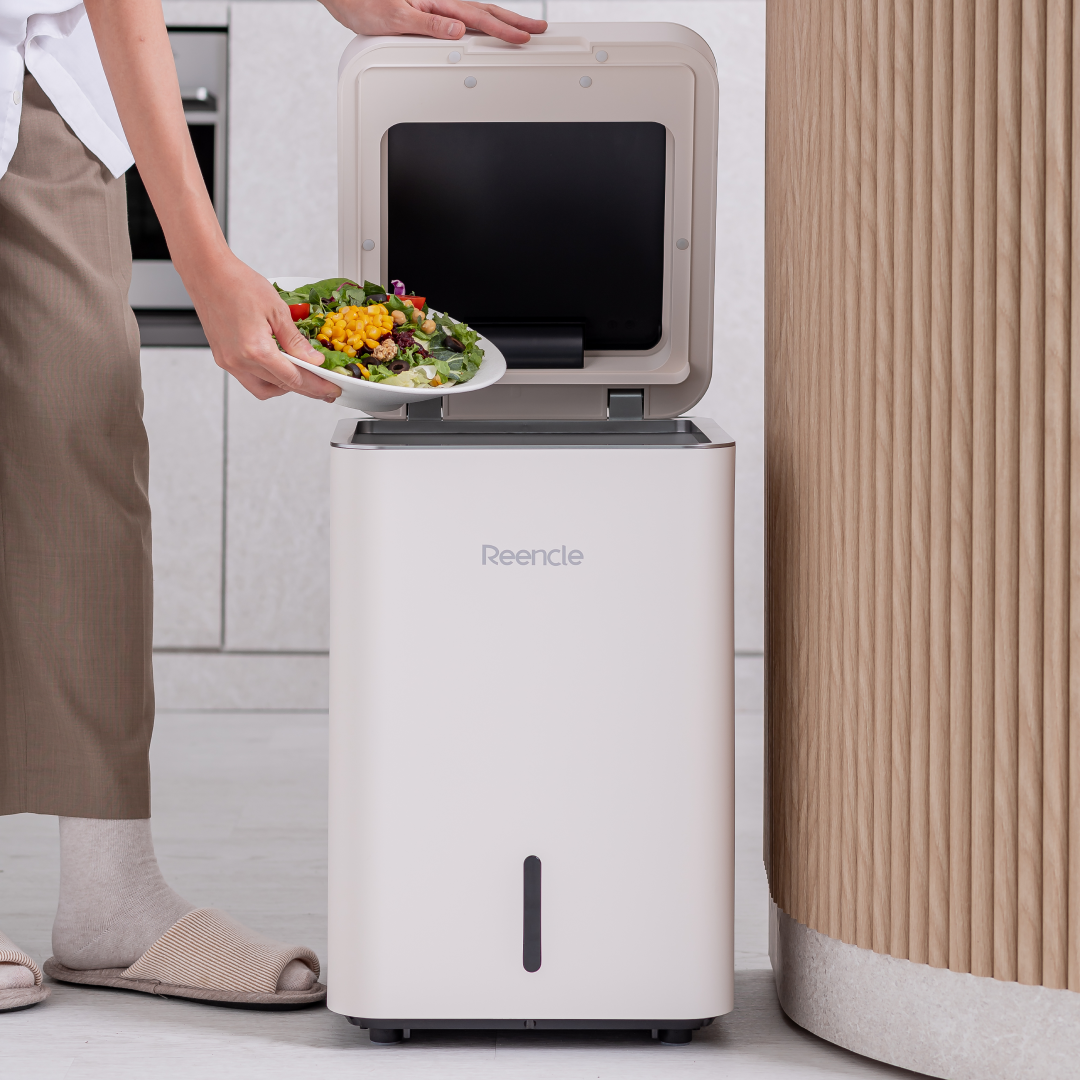A Guide To Workplace Composting

Imagine a world where your office coffee grounds and leftover lunch scraps weren't just tossed up to the landfills but transformed into nutrient-rich compost, nourishing the soil and promoting healthy plant growth. This isn't just a utopian vision; it's a reality with workplace composting.
Composting is the natural process of decomposing organic materials like food scraps and yard waste into a valuable soil amendment called compost. By implementing a workplace composting program, your business can significantly reduce its environmental impact, potentially save money on waste disposal, and boost employee engagement – all while fostering a more sustainable future.
While many companies already recognize the importance of composting and implementing various composting strategies, businesses still have a vast opportunity to embrace and expand upon this eco-friendly initiative.
Benefits of Workplace Composting
The benefits of workplace composting extend far beyond simply keeping food scraps out of landfills. Here are some key advantages to consider:
Environmental Benefits
● Reduced Landfill Waste: Landfills are overflowing, and organic materials like food scraps take up a significant portion of landfill space. Composting diverts these materials from landfills, helping to preserve limited space and reduce the environmental burden.
● Decreased Greenhouse Gas Emissions: When organic matter decomposes in landfills, it releases methane, a potent greenhouse gas contributing to climate change. Composting allows organic matter to decompose aerobically, significantly reducing methane emissions.
● Creation of Nutrient-Rich Compost: Composting transforms food scraps and yard waste into a valuable soil amendment. This compost is rich in nutrients and organic matter, promoting plant growth, improving soil health, and reducing the need for chemical fertilizers.
Economic Benefits
● Cost Savings: Depending on your current waste disposal costs and the chosen composting program, you may see cost savings. Some municipalities offer composting programs with discounted fees, and reduced landfill waste can lead to lower disposal costs.
● Improved Brand Image: Consumers are increasingly interested in supporting businesses committed to sustainability. Implementing a workplace composting program demonstrates your commitment to environmental responsibility and can enhance your brand image.
Creating a Checklist for Workplace Composting: The 6 C’s
Implementing a successful workplace composting program requires planning and organization. This checklist, utilizing the 6 C's, guides you through the crucial steps of setting up and maintaining an effective system:
1. Confirm the Availability of Organic Waste
Before starting the workplace composting program, ensure your workplace offers organic waste collection services. This could be through a local composting program, a private company, or even a community garden partnership. Without proper collection, your compostable materials will end up in landfills, negating the program's purpose.
Here are some questions to ask the waste hauler:
· Do you offer a waste collection for composting?
· What materials do you accept for composting?
· Do you collect pre and post-consumed food, meat, and paper-based waste?
· Do you use compostable bags for collecting organic waste?
· What size of containers do you provide for composting?
· How frequently will the waste collecting containers be collected?
· What is the cost of the service?
2. Conduct a Waste Audit
Understanding your current waste stream is crucial. Conduct a waste audit to assess the volume and types of organic waste generated daily. This will help determine the size and type of composting system needed and guide employees' educational efforts.
Conduct a waste audit to determine:
· quantitty and composition of generated waste
· the effectiveness of the current waste management system
· the opportunities for improving composting and recycling strategies
3. Consider the Location and Equipment
Based on the waste audit, choose appropriate composting bins. Opt for countertop bins in break rooms and larger bins near cafeterias. Ensure the bins are clearly labeled and have liners certified compostable. Consider additional equipment like compost sifters or turning tools if needed.
Identify a suitable location for placing composting bins, ensuring it's accessible, well-ventilated, and away from direct sunlight to prevent odors. Strategically place bins throughout the workplace, ensuring convenient access for employees.
4. Create Employee Engagement
Gauge employee interest and potential participation through surveys or discussions. Understanding employee buy-in is crucial for the program's success. Launch an educational campaign to inform employees about composting benefits, what can and cannot be composted, and proper bin usage. The campaign should focus around:
● Explaining the Composting Program: Clearly communicate the goals and benefits of the program, outlining acceptable compostable materials and addressing common misconceptions about composting.
● Providing Educational Materials: Create informative posters, handouts, or short training videos explaining the program's specifics and best practices for participation.
● Ongoing Education and Reminders: Regularly address any questions or concerns and provide reminders to keep employees engaged and informed about the program's progress.
5. Commence the Program
With everything in place, it's time to launch your program! Clearly mark bins and collection points, and provide ongoing support to employees. Address any concerns promptly and celebrate milestones to maintain enthusiasm.
Here are a few steps you can follow to implement the workplace composting program:
● Clear Labeling: Use clear and concise labels on bins to differentiate between compostable and non-compostable materials. Consider using visuals like pictures or icons for easy identification
● Signage and Instructions: Post informative signage near collection stations outlining what goes in the compost bin and what doesn't. Include concise instructions on proper bin usage, such as wrapping food scraps in compostable liners or scraping off any non-compostable materials on containers before disposal.
● Regular Emptying: Schedule regular emptying of compost bins to prevent overflowing and potential odors. Depending on the program structure, this might involve collecting bins for a composting service or having a designated employee responsible for emptying them into a larger compost bin for transportation.
● Transportation to Composting Facility: Determine how to transport collected compost to a composting facility or composters.
● Get the Compost: Regularly empty the composters according to your program's schedule or when they become full. This prevents them from overflowing and trapping moisture, which can slow down decomposition and create unpleasant smells
6. Continue the Program
Composting is an ongoing process. Regularly monitor bin usage, address overflow issues, and provide reminders to employees. Track the program's progress, highlighting the amount of waste diverted from landfills and the positive environmental impact. Celebrate milestones and keep employees engaged through regular communication and recognition.
Conclusion
Workplace composting is a powerful and practical approach to reducing your business's environmental impact while fostering a sense of environmental responsibility within your team. By implementing a well-planned and well-maintained program, you can significantly contribute to a more sustainable future, improve your brand image, and save money on waste disposal. Start your journey today and be a leader in creating a greener, more sustainable workplace.














